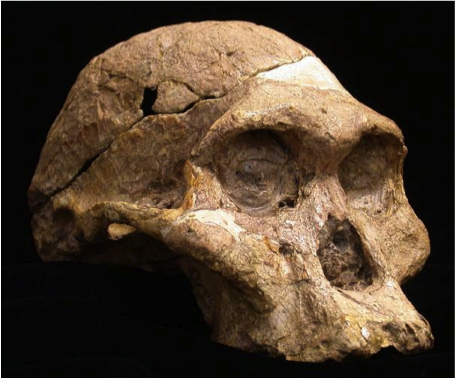Human Ancestor Guys Stayed Home While Gals Cruised

Our distant female relatives may have cruised around for mates while the guys may have been more stay-at-home types, scientists find.
Until now, much of what was known about our human ancestors' biology and lifestyle was deduced with little hard evidence.
In the new study, scientists analyzed fossils of extinct apelike hominids from the Sterkfontein and Swartkrans caves in South Africa. These 1.8 million to 2.2 million-year-old specimens included eight members of Australopithecus africanus, which may have been a direct ancestor of humans, as well as 11 members of Paranthropus robustus, which dead-ended on a side branch of the hominid family tree for reasons still unknown. These landscapes were much the same back then as they are now — hilly grasslands with rivers — although they had a bit more water and vegetation.
The investigators concentrated on traces of naturally occurring strontium isotopes in the enamel of 19 molar and canine teeth. Isotopes of an element all have the same number of protons in their atoms, but they differ from each other in how many neutrons they have; for instance, strontium-86 has 48, while strontium-87 has 49.
The ratios of strontium isotopes in enamel are good indicators of the landscape where their owners lived as the teeth grew. "The strontium isotope ratios are a direct reflection of the foods these hominids ate, which in turn are a reflection of the local geology," said researcher Sandi Copeland at the University of Colorado at Boulder.
The researchers discovered that more than half of the smaller individuals analyzed, inferred to be females, may have been foreign brides, possessing strontium isotope compositions that did not match the landscapes where they made their homes. On the other hand, about 90 percent of the larger presumed males apparently grew up where they lived. [Top 10 Mysteries of the First Humans]
"We knew that if we knew how early hominids used their landscape, we could find out something interesting about their social structures or home-range sizes or other aspects of their lives difficult to ascertain from fossil teeth and bones," Copeland said. "Here we have the first direct glimpse of the geographic movements of early hominids."
Get the world’s most fascinating discoveries delivered straight to your inbox.
These findings suggest that females were more likely than males to roam away from their birth groups across the South African savannahs. Males may have stayed in a relatively limited zone nearly 12 square miles (30 square kilometers) large, the researchers calculated based on the isotopic fingerprints of the surrounding bedrock.
This behavior is also typically seen today in chimpanzees, bonobos and many human groups, though not in gorillas and most other primates.
In chimpanzees, "males tend to remain in their birth territory and have close cooperation with other males in their communities to defend their territories," Copeland told LiveScience. "It could be that among early hominids, we're seeing some correlation with a close cooperative behavior between males."
Dispersal of either males or females or both from their birth groups is common in animals to avoid close inbreeding.
"We assumed more of the hominids would be from nonlocal areas, since it is generally thought the evolution of bipedalism was due in part to allow individuals to range longer distances," Copeland said. "Such small home ranges could imply that bipedalism evolved for other reasons."
Another way to interpret the behavior of these males was that they did not prefer staying at home, but instead remained close to areas rich in magnesium-rich dolomite rock, where caves would have been abundant, perhaps for resources such as food or shelter. "I've never thought of these early male hominids as the quintessential cavemen, but the potential use of caves at this early time period is something worth considering," said researcher Matt Sponheimer at the University of Colorado at Boulder.
It remains unclear where these roaming female australopithecines spent their formative years, or why males apparently preferred staying close to dolomite. Still, "this study gets us closer to understanding the social structure of ancient hominids since we now have a better idea about the dispersal patterns," Copeland said.
The scientists will detail their findings in the June 2 issue of the journal Nature.

